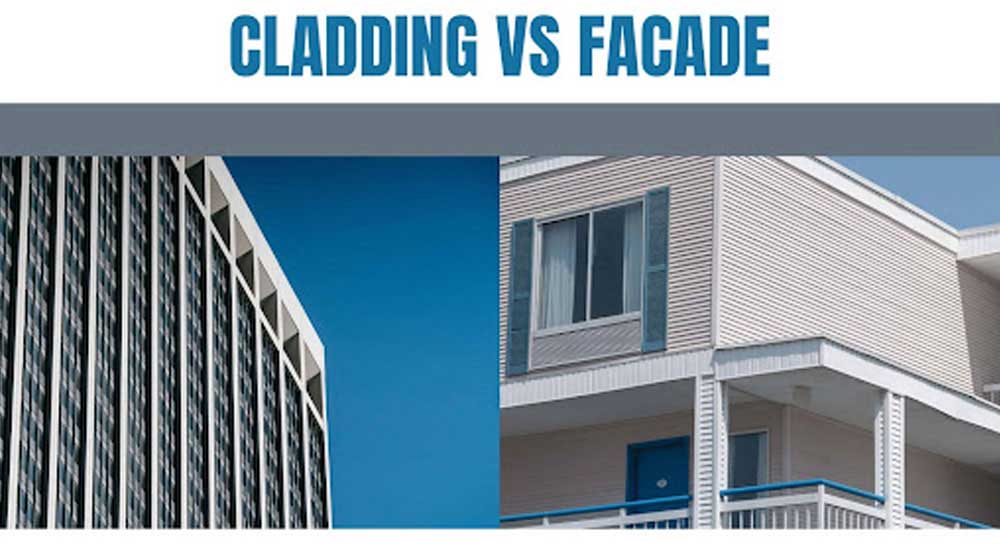

Have you ever wondered about the difference between the cladding and a facade? These terms are often used interchangeably, but they refer to two distinct elements of a building's exterior. ACP Cladding is the outer layer of material that covers a building's structure, while facade refers to the overall appearance of a building's frontage.
Understanding the difference between these two terms can help you make informed decisions when it comes to designing and constructing your building.
In this blog post, we'll dive deeper into the key differences between cladding and facade, and explore their respective roles in the construction process. So, let's get started!
A facade refers to the front-facing part of a building, which is often designed to be aesthetically pleasing and to create a particular impression or mood. It can include a wide range of architectural elements, such as windows, doors, columns, and decorative details, that are arranged in a specific way to create a cohesive whole.
ACP Sheet Facades can be made from a variety of materials, including ACPs, stone, brick, wood, plaster, and glass, and they can vary widely in style depending on the time period and cultural context. In addition to being visually impressive, and popular material used for building facades for several reasons, such as providing shade or insulation from the elements. Overall, the façade is an important aspect of any building's design, serving as a representation of its character, style, and intentions.
Cladding refers to the exterior covering of a building or structure. It is a material that is applied to the surface of a building to protect it from the elements, provide insulation, and improve its appearance. Cladding includes a wide range of materials, such as metal, wood, stone, brick, and glass. The selection of cladding material typically depends on the design aesthetic, environmental conditions, and functional requirements of the building.
Aluminium Cladding Panels can also provide additional, acoustic properties, and energy efficiency to a building. However, poor installation and maintenance of the cladding material can lead to serious problems, such as moisture infiltration, mold growth, and structural damage.
Moreover, understanding the difference between façade and cladding is crucial in the architectural and construction industries. Façade refers to the exterior surface of a building, which includes its design elements, decorations, and overall appearance. Cladding, on the other hand, refers to the materials that are used to cover or protect the façade from weathering and other environmental factors.
Both façade and cladding play a vital role in the overall aesthetic and functionality of a building. They not only protect the structure from external elements but also contribute to its visual appeal. Thus, architects, designers, and builders need to comprehend the distinction between these terms to ensure the success of any construction project.
In conclusion, getting the terminology right is crucial when it comes to designing and constructing a building. Understanding the difference between cladding and facade is key to developing an accurate and effective project plan.
While cladding is responsible for protecting from the elements, the facade is about creating an aesthetically pleasing exterior that reflects the building's purpose and identity.
By taking into account these differences, architects and builders can work together to create buildings that are not only functional but also visually appealing.
So, now that you're armed with a better understanding of cladding vs facade, you can confidently move forward with your next construction project.